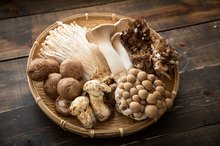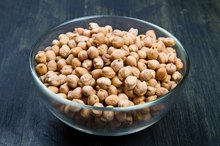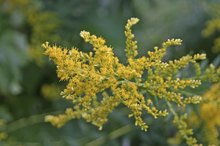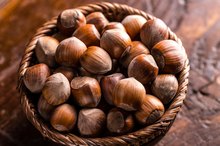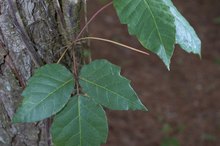Allergy to Pumpkin
Pumpkins have been cultivated in North America for more than 5,000 years and are consumed the world over. But for some people, eating pumpkin pie at Thanksgiving or carving Jack-o-Lanterns at Halloween can trigger allergic responses that, in rare case, could be life-threatening.
Identification
Pumpkins are members of the Cucurbitaceae family, which also includes zucchini, cucumber, gourd and squash. The diverse group of annuals and perennials bears rounded ribbed, edible fruit, which varies in size, shape, patterns and colors from white or green to yellow to orange. The fruits can weigh from 1 lb. to 1,000 lbs., the largest pumpkin on record weighing 1,468 lbs.
- Pumpkins are members of the Cucurbitaceae family, which also includes zucchini, cucumber, gourd and squash.
- The diverse group of annuals and perennials bears rounded ribbed, edible fruit, which varies in size, shape, patterns and colors from white or green to yellow to orange.
Allergens
Symptoms of a Mushroom Allergy
Learn More
An allergic reaction is caused when the immune system mistakenly identifies a protein in food, such as the pulp of the pumpkin, as dangerous. It over-responds and releases antibodies, known as immunoglobulin E, or IgE, to protect the body. These antibodies react with the allergen triggering the release of histamines that may affect the skin and membranes in the eyes, nose, respiratory tract and intestine. One of the protein allergens identified in pumpkin is profilin, which may also cause an allergy to citrus fruits, melon, tomato and bananas.
- An allergic reaction is caused when the immune system mistakenly identifies a protein in food, such as the pulp of the pumpkin, as dangerous.
- These antibodies react with the allergen triggering the release of histamines that may affect the skin and membranes in the eyes, nose, respiratory tract and intestine.
Causes
If you have an allergy to pumpkin, consuming other members of the squash family including zucchini, muskmelon and cucumber may also trigger an allergic reaction. Individuals allergic to pumpkin are usually allergic to pumpkin seeds. Touching the pulp or seeds can cause dermatitis or hives in sensitive individuals. Inhaling the vapors from cooking pumpkin can also produce allergic symptoms in sensitive people. Beware of cross-contamination from pots and dishes previously used to prepare pumpkin.
- If you have an allergy to pumpkin, consuming other members of the squash family including zucchini, muskmelon and cucumber may also trigger an allergic reaction.
- Touching the pulp or seeds can cause dermatitis or hives in sensitive individuals.
Symptoms
Symptoms of a Crab Allergy
Learn More
Within minutes of ingestion, pumpkin can induce various allergic symptoms in some individuals. Symptoms can be mild, such as itching, dermatitis and nasal congestion, or more serious, such as asthma and difficulty breathing, swelling of the face and lips or shortness of breath. Although rare, anaphylaxis may develop, requiring immediate medical attention or the administration of epinephrine.
Prevention
The best way to prevent an allergic reaction to pumpkin is to avoid any food that contains it. The Federal Food and Drug Act requires all ingredients to be listed on labels of canned and packaged processed foods. Avoid commercial baking mixes that may contain pumpkin seed powder or extracts. Be cautious of eating foods you do not prepare yourself, including bread, cakes, dips and spreads, casseroles, stews, stir-fries, cookies. Prevent skin contact with pumpkins and their seeds.
- The best way to prevent an allergic reaction to pumpkin is to avoid any food that contains it.
- The Federal Food and Drug Act requires all ingredients to be listed on labels of canned and packaged processed foods.
Related Articles
References
- Swiss Medical Weekly: IgE-Mediated Food Allergies in Swiss Infants and Children
- Pumpkin, cooked, from fresh, fat not added in cooking. FoodData Central. U.S. Department of Agriculture. Published April 1, 2020.
- Asif M. The prevention and control the type-2 diabetes by changing lifestyle and dietary pattern. J Educ Health Promot. 2014;3:1. doi:10.4103/2277-9531.127541
- Di Noia J. Defining powerhouse fruits and vegetables: A nutrient density approach. Prev Chronic Dis. 2014;11:E95. doi:10.5888/pcd11.130390
- Tan BL, Norhaizan ME, Liew WP, Sulaiman Rahman H. Antioxidant and oxidative stress: A mutual interplay in age-related diseases. Front Pharmacol. 2018;9:1162. doi:10.3389/fphar.2018.01162
- Zhao LG, Zhang QL, Zheng JL, et al. Dietary, circulating beta-carotene and risk of all-cause mortality: A meta-analysis from prospective studies. Sci Rep. 2016;6. doi:10.1038/srep26983
- Vitamin A. National Institutes of Health Office of Dietary Supplements. February 14, 2020
- Wong IY, Koo SC, Chan CW. Prevention of age-related macular degeneration. Int Ophthalmol. 2011;31(1):73–82. doi:10.1007/s10792-010-9397-5
- Pullar JM, Carr AC, Vissers MCM. The roles of vitamin C in skin health. Nutrients. 2017;9(8):866. doi:10.3390/nu9080866
- Pumpkin Pie Not a Treat for Some Allergic Children. American College of Allergy, Asthma & Immunology. 2010.
- Ge B, Zhang Z, Zuo Z. Updates on the clinical evidenced herb-warfarin interactions. Evid Based Complement Alternat Med. 2014;2014. doi:10.1155/2014/957362
- Pumpkin. Professional Monograph. Natural Medicines Database. Therapeutic Research Center. Updated May 9, 2019.
Writer Bio
Gord Kerr's professional background is primarily in business and management consulting. In 1991, Kerr started writing freelance for a small local newspaper, "The Summerland Review," and a leading sailing publication, "Cruising World Magazine." Kerr has a Bachelor of Business Administration degree from Wilfred Laurier University.
